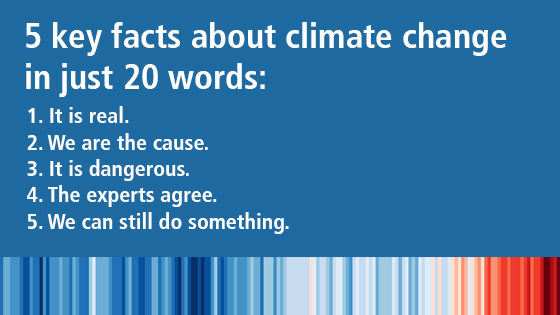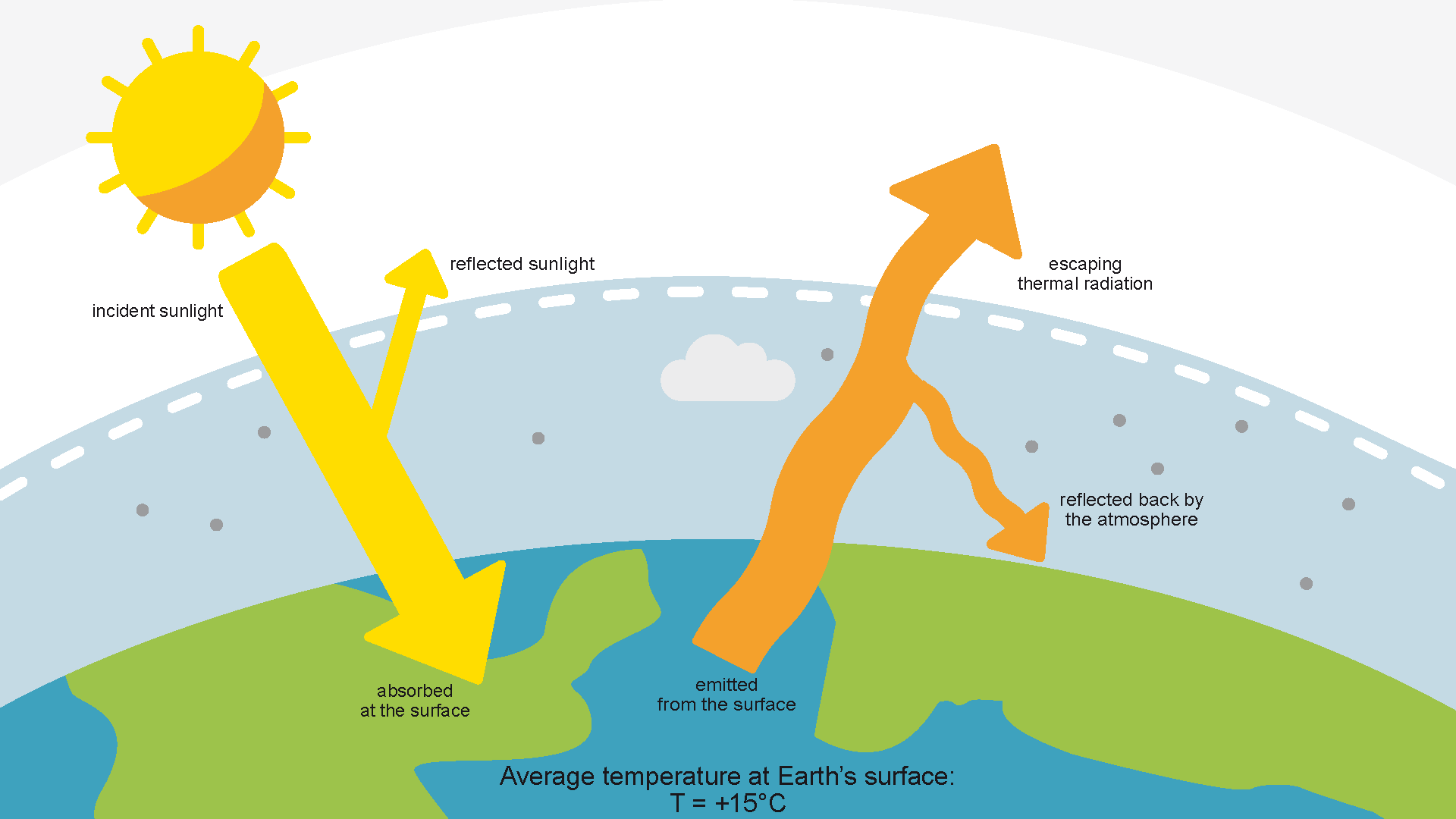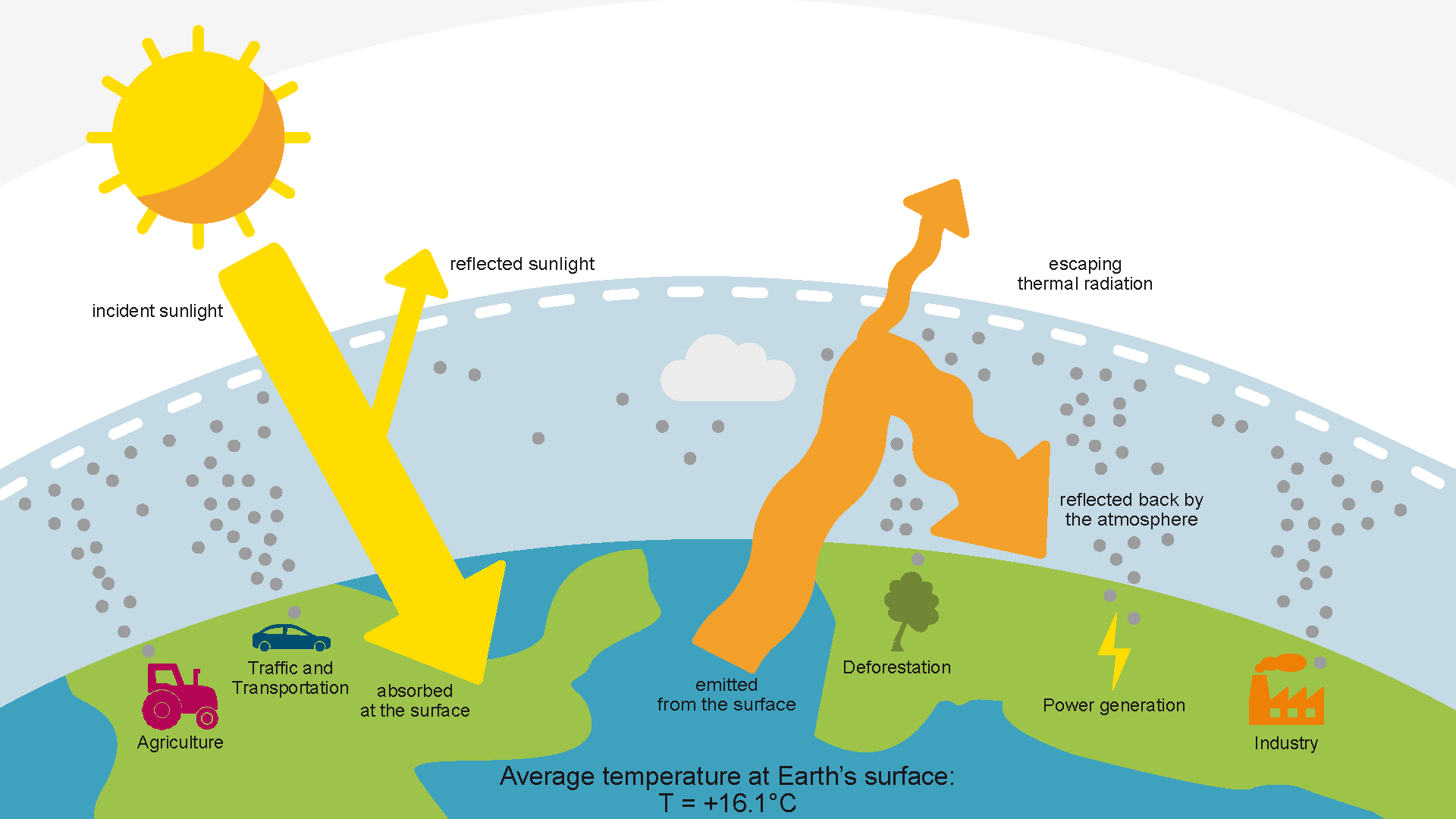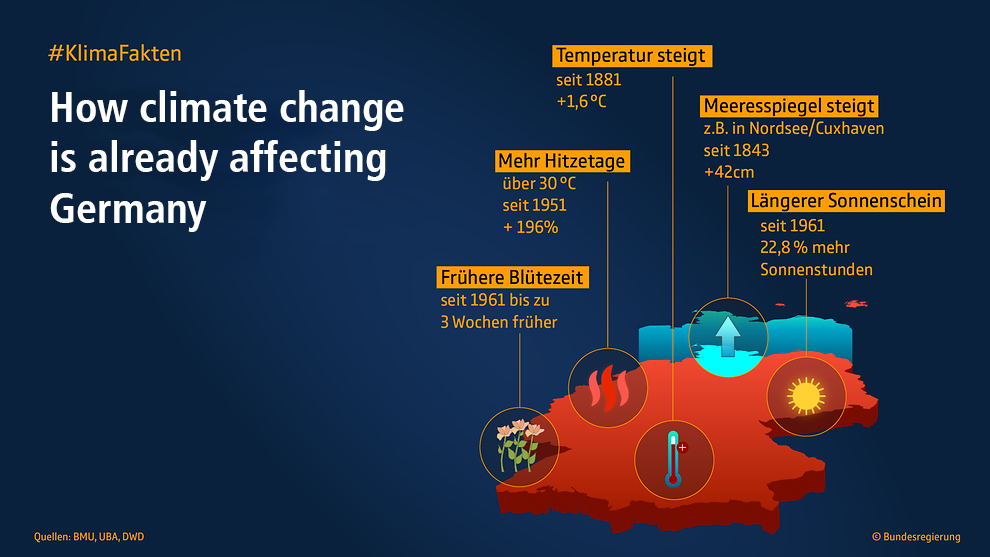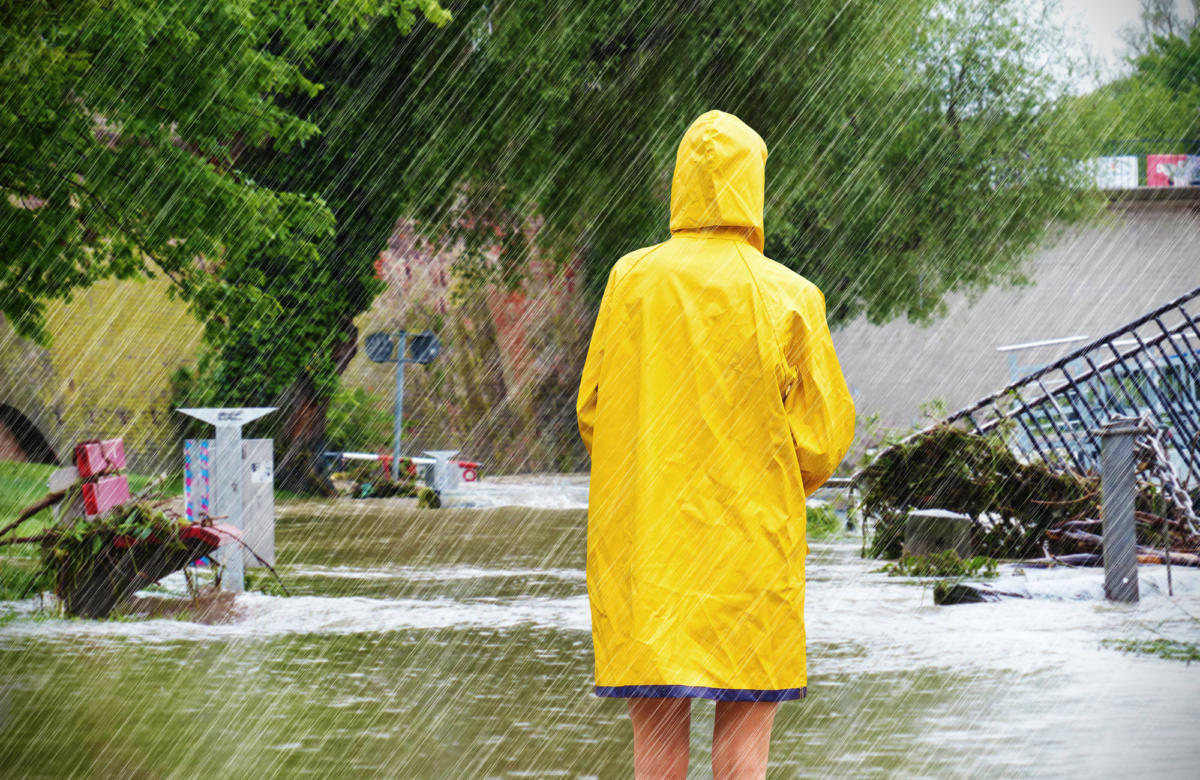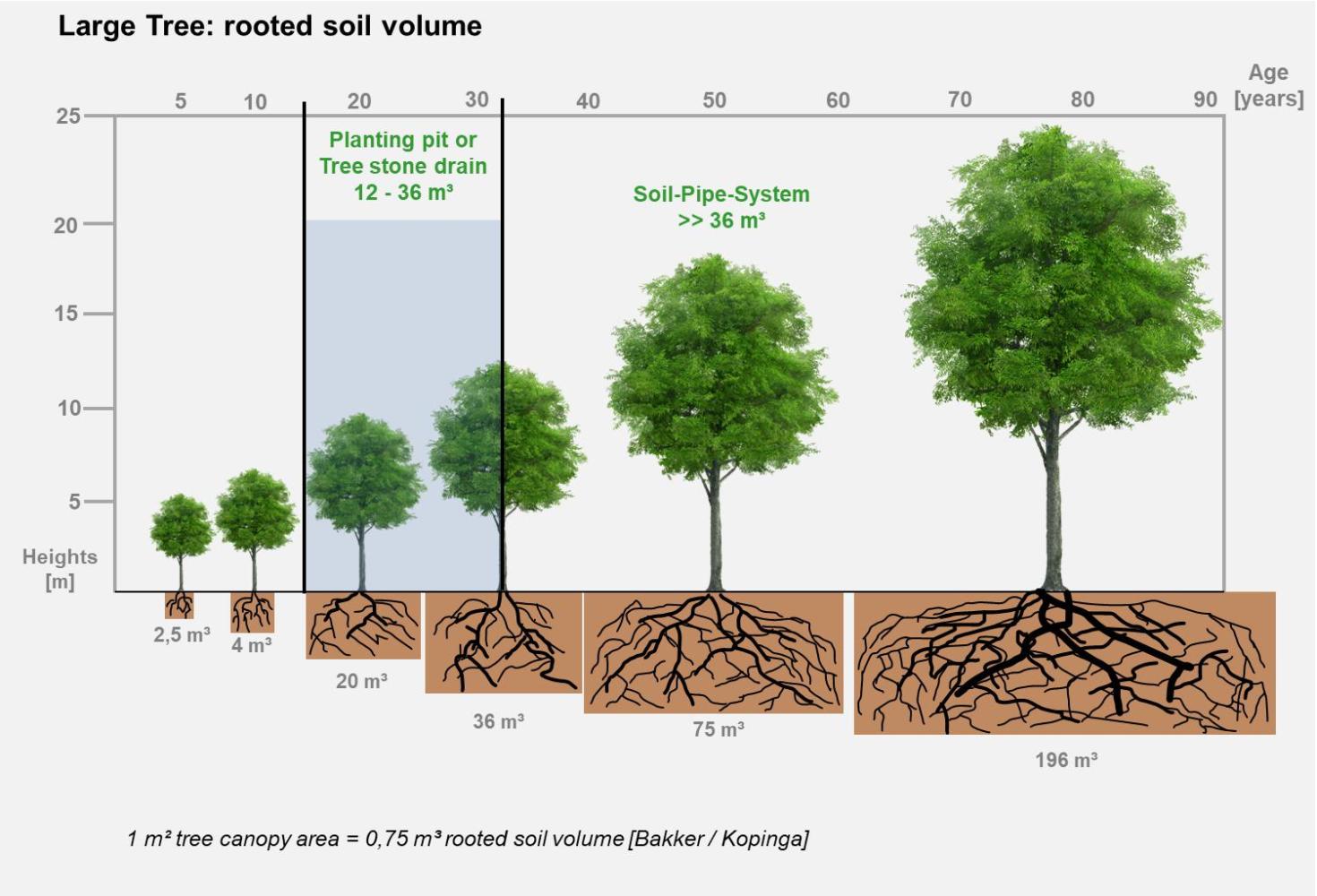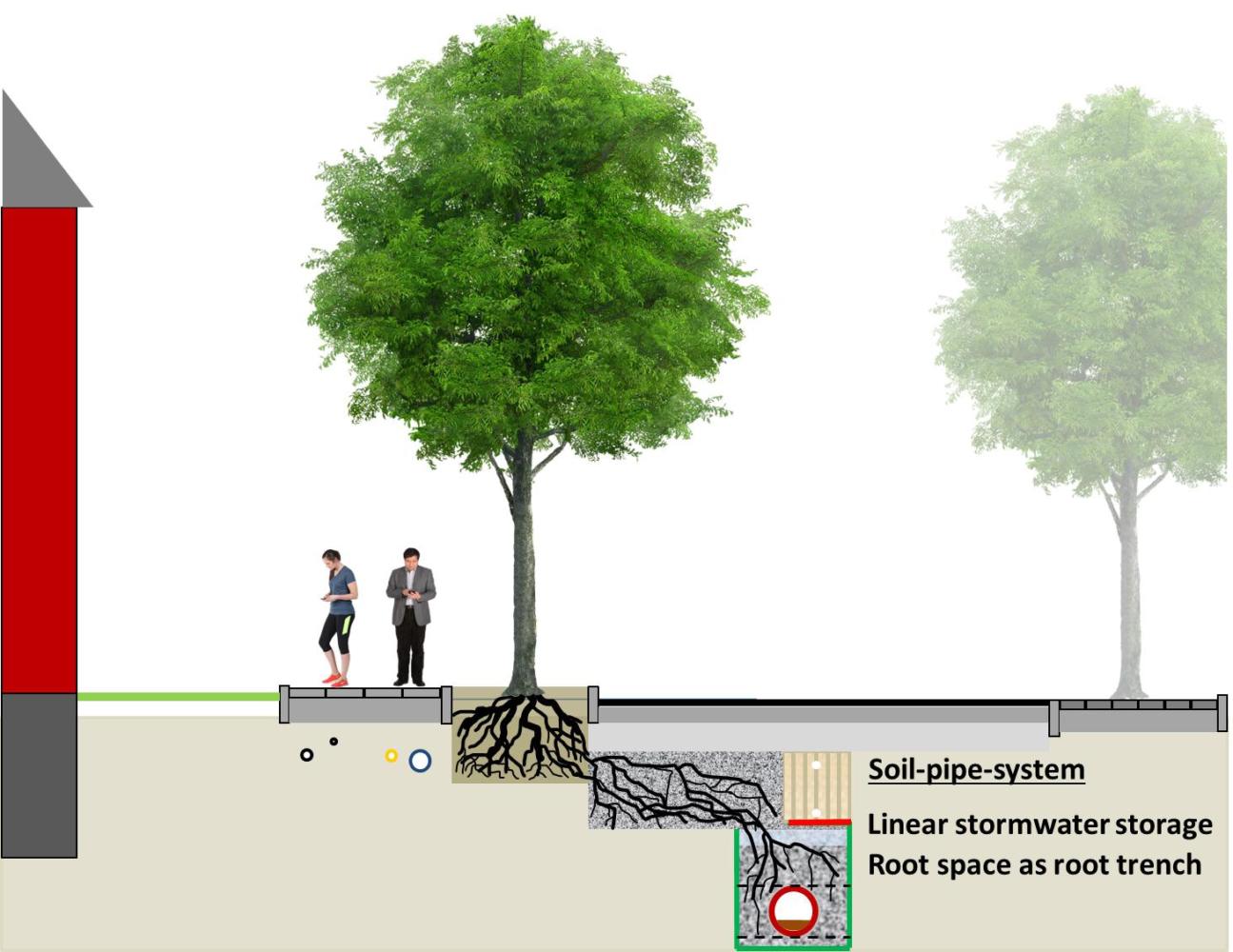Climate change
The fact that the Earth is in the midst of climate change can no longer be ignored. Climate change is real: it is tangible, it is visible, it is measurable, it is dangerous. The Earth is getting dangerously warmer, faster than ever before, and around the world.
The greenhouse effect
Humans are demonstrably responsible for this, as they have caused a significant and increasing concentration of greenhouse gases in the atmosphere, especially since the beginning of industrialisation, thus massively increasing the natural greenhouse effect. The ubiquitous CO2 has a strong greenhouse effect and is a major contributor to climate change: Its accumulation in the atmosphere leads to the warming of the lower layers of air and thus to the overall warming of our planet.
© Siemens Stiftung 2022, Understanding global warming – The anthropogenic greenhouse effect (simple) , licensed under CC BY-SA 4.0 international“
The consequences of climate change, such as the increase in extreme weather events like heat waves, droughts, heavy rainfall, floods and storms, are clearly visible throughout Europe – including Germany. The figures published by the German government, based on sources from the BMU, UBA and DWD, show this very clearly.
The effects of climate change, especially the rise in temperature, are particularly noticeable in cities: the soil is sealed over large areas, it cannot cool sufficiently in the summer months and water absorption during heavy rainfall is minimal. We are all familiar with the consequences: heat islands in summer and flooding with massive consequences during prolonged and heavy rainfall. This not only makes life in cities more difficult, but also significantly increases the burden on human health. Between 30 May and 4 September 2022, an estimated 61,672 people in Europe died directly or indirectly as a result of the heat. In Germany, 8,173 people died as a result of the extremely high temperatures in the summer of 2022.
Efficient solutions
The facts and figures on climate change and its impacts speak for themselves, and the experts agree. They also agree that there is something we can all do. Adaptation is the new strategy.
The sponge city principle
There is no question that urban infrastructure needs to be adapted to the demands of climate change. The use of rainwater and the management of heavy rainfall will play a key role. This is where the ’sponge city‘ principle comes into play: one aspect that is becoming increasingly important for both heat prevention and natural rainwater management in cities is the cooling capacity of soils and vegetation. Sufficiently watered green spaces are natural ‚refrigerators‘ in the city. This cooling capacity can be increased through rainwater storage, soil improvement and continuous watering of vegetation. The promotion of the ’sponge city principle‘ and the development of sustainable water storage and irrigation systems are therefore key future tasks for climate-adapted cities (see also sponge city principle for trees).
The BoRSiS principle
Together with professors from the Ruhr West University of Applied Sciences, the Bochum University of Applied Sciences, the University of Duisburg-Essen, a tree ecologist, the city of Detmold and the industrial partner Rockflow by ROCKWOOL, EADIPS FGR is developing the interdisciplinary project ‚BoRSiS – soil pipe system as an innovative element of climate-adapted urban drainage‘ (see schwammstadt.de). The aim of the project is to implement an innovative, marketable and practical concept for creating sufficient root space for vital trees in combination with a practical rainwater storage and irrigation concept. Shade-giving trees play a very important role in creating a better and cooler microclimate in cities, as in the sponge city principle. The focus is not just on planting new trees. The focus is on improving the site conditions of existing trees, which are often planted in much too small pits and suffer and possibly die during prolonged periods of drought and heat.
Crucially, however, the project’s approach is to create space for roots and rainwater management in the previously unused large underground space of roads, in the pipe trenches of sewers. If these sewers are made of root-resistant, robust ductile iron pipes, tree roots and rainwater will use the large volume of the pipe trench. Ductile cast iron pipes are also the material of choice: they are made from up to 99% secondary raw materials. At the same level of quality, the cast iron material can be 100% recycled without loss and returned to the cycle. A true circular economy, a true adaptation to climate change!
This creates a triple benefit (from top to bottom):
- decentralised rainwater management, decoupling from sealed surfaces: creation of a large, linear rainwater reservoir for urban tree (Rockflow), > 12 m3
- root zone design: Creation of a large, linear, irrigated, aerated root zone connecting (extended) tree sites, > > 12 m3
- secure drainage: With ductile cast iron pipes to EN 598 (2009-10) in a robust design with cement mortar coating to EN 15542 (2021) and root resistant to EN 17970 (2023)

